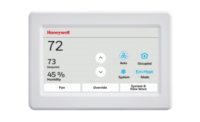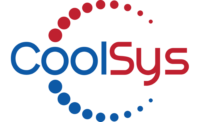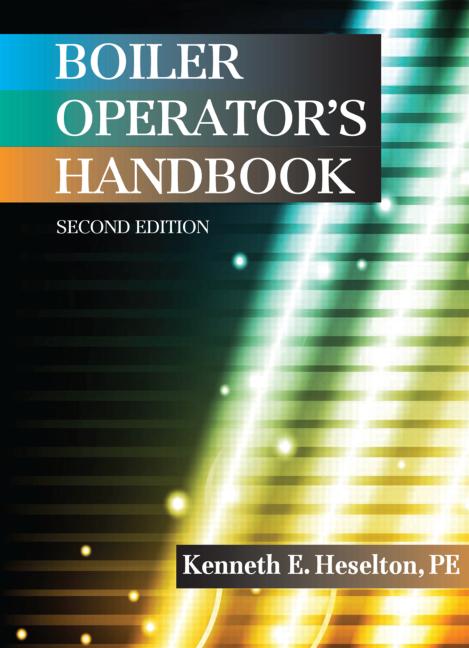
During the past 20 years, there have been significant advancements in boiler design and controls that have helped manufacturers provide tailored solutions to customers. Over the next decade and beyond, this trend will continue. Not only will manufacturers provide customized solutions, but they will use financial metrics to develop the best solution for a given customer.
In the boiler room of the future, the system is certain to be smaller in size and hybrid in nature. In addition, the equipment will be “smart,” sending alerts to operators when preventative maintenance is due, ensuring that the system runs at a maximum efficiency level throughout its life cycle.
FOOTPRINTS AND FLEXIBILITY
Twenty years ago, the way a company’s boiler, burner, and control system operated would be best described as crude. When there was a problem, the mechanical system often had to be attacked via trial and error. Thankfully, the introduction of electronic controls changed all of that. During the past decade, computer chips and processors have brought the boiler room into the technological age. This intelligence has resulted in more efficient operation, lower costs, and orderly boiler rooms.Technological advancements, together with engineering enhancements, have led to more compact equipment designs. Many boiler manufacturers are finding a way to get the same output with a smaller footprint by effectively extending the heating surface. As a result, the space needed for the boiler rooms of tomorrow will be just a fraction of what was required a decade ago.
The size of today’s boilers is decreasing, but not at the expense of efficiency. Whereas 80% efficiency used to be the norm, today’s leading companies are producing systems that garner an efficiency rating of 90% or more. This increase can be attributed to several factors, including the introduction of electronic control systems along with advances in heat transfer technology and combustion.
One tangible way electronic control systems are helping to increase boiler room efficiency lay in their ability to automatically switch systems depending on conditions. For certain heat loads, it’s optimal to use a condensing boiler, while for other heat loads, a non-condensing boiler is better. Several manufacturers have developed control platforms to optimize hybrid systems with condensing and non-condensing boilers. This “intelligence” enables the system to automatically switch back and forth between boilers depending on the temperature range, which can improve energy savings by 20% to 40% on average.
Companies that currently operate with a non-condensing boiler can achieve this level of energy savings via a hybrid solution. They can add a condensing boiler with the appropriate control system to their existing non-condensing unit to capitalize on the benefits of a fully condensing system.
ALERTS ON THE WAY
In the future, electronic controls will signal maintenance intervals, which will help extend product life. Most people in the industry know that routine service and maintenance on the boiler system helps to increase efficiency; however, regular service is often overlooked. In the future, boiler room operators will hear alarm bells or see a display indicating that service is needed - similar to alerts we are used to seeing in cars. Modern cars alert you as to when maintenance is needed, based on the way the car has been driven and under what conditions - not just every 3,000 miles. An onscreen alert notifies you to a possible problem in one of the car’s systems. Consequently, you take action.
FUELS AND FINANCES
Tighter environmental legislation and corporate social responsibility policies over the past few years have influenced the products that boiler manufacturers are introducing into the marketplace. Several manufacturers, including Cleaver-Brooks, have designed ultra low-NOx products that meet even the strictest governmental standards. Looking ahead, boilers will be required to limit the amount of noxious pollutants emanating from the flue stack, thereby decreasing the amount of CO, NOx, SOx, and other contaminants emitted into the atmosphere.On the engineered boiler side, there are many exciting developments surrounding alternative fuel applications. There are a number of innovative solutions that companies have successfully implemented to improve their energy and environmental performance. Among these solutions is the combustion of alternative fuels, such as biogas refinery fuels, hydrogen, and flammable liquids, to produce usable power. In the future, we can expect to see year-over-year growth in the number of companies that implement alternative fuel options.
Finally, boiler manufacturers of the future will do more than just sell products. With nearly 80% of boilers in the United States aging beyond 30 years, boiler company representatives will need to analyze each customer’s situation using financial assessment tools, tailoring a solution to best meet their goals. For some customers, this will mean a new capital purchase, and for others, a retrofit will make sense.
Our company recently launched a proprietary program called BOOST (boiler operation optimization savings test) for steam boilers that details the annual cost savings realized from making certain energy-efficient upgrades, retrofits, or replacements. Company-specific information about an existing boiler room is used as the basis for the analysis. The resulting report shows the effect of implementing an energy savings solution, including the predicted efficiency calculation and expected savings in dollars. Most importantly, the report provides a detailed financial analysis that shows a company its after-tax savings, net present value (NPV), internal rate of return (IRR) and after-tax payback. Tools like BOOST will likely become commonplace in the future.
Industry advancements such as electronic controls, hybrid systems, and financial assessment tools are helping today’s boiler manufacturers deliver customized solutions. In addition, emerging technology that will visually or audibly notify boiler operators of maintenance intervals will help systems operate at a high efficiency level for a longer period of time. As a result, system costs will run at or even below projections, a major concern now and likely in the future. TB






